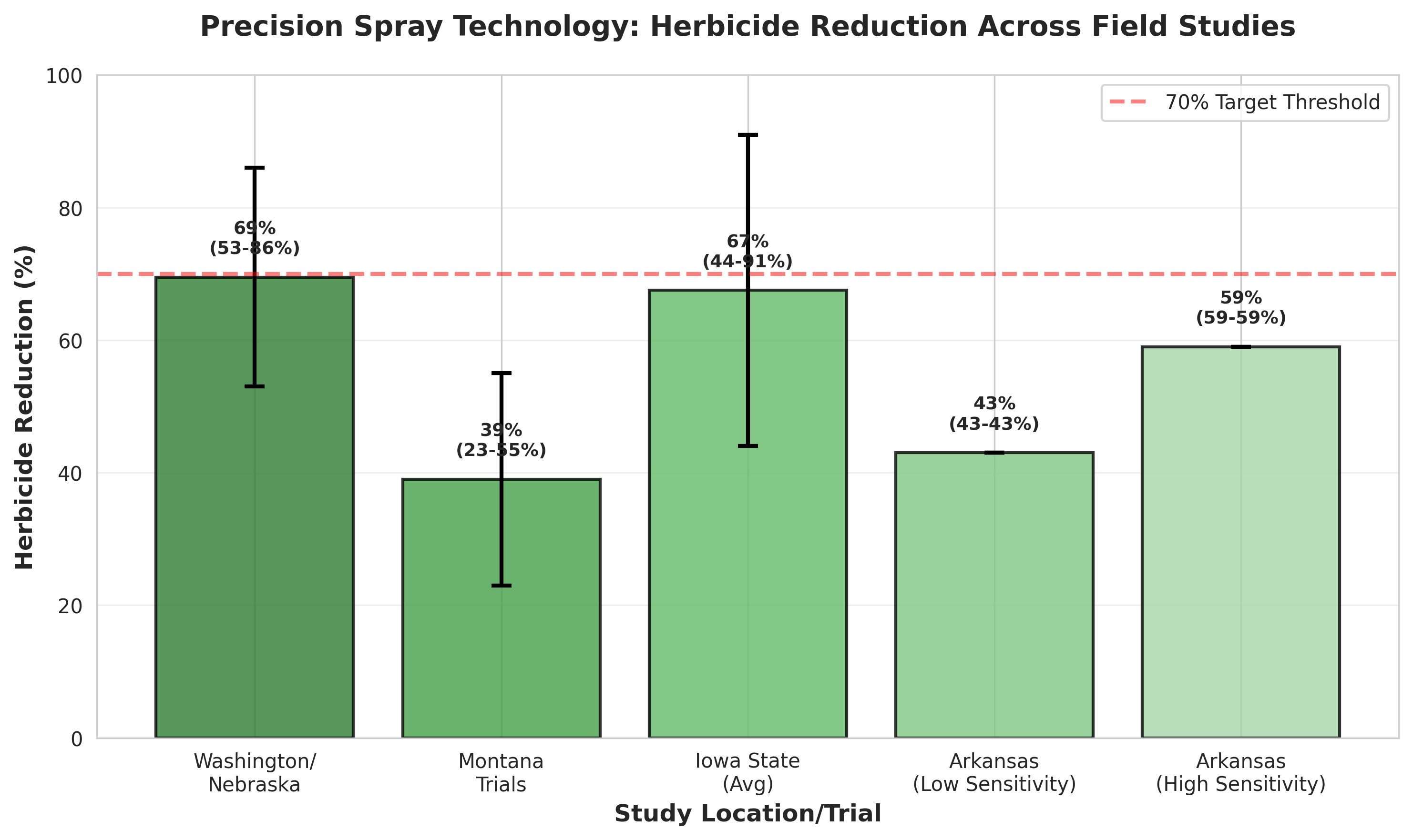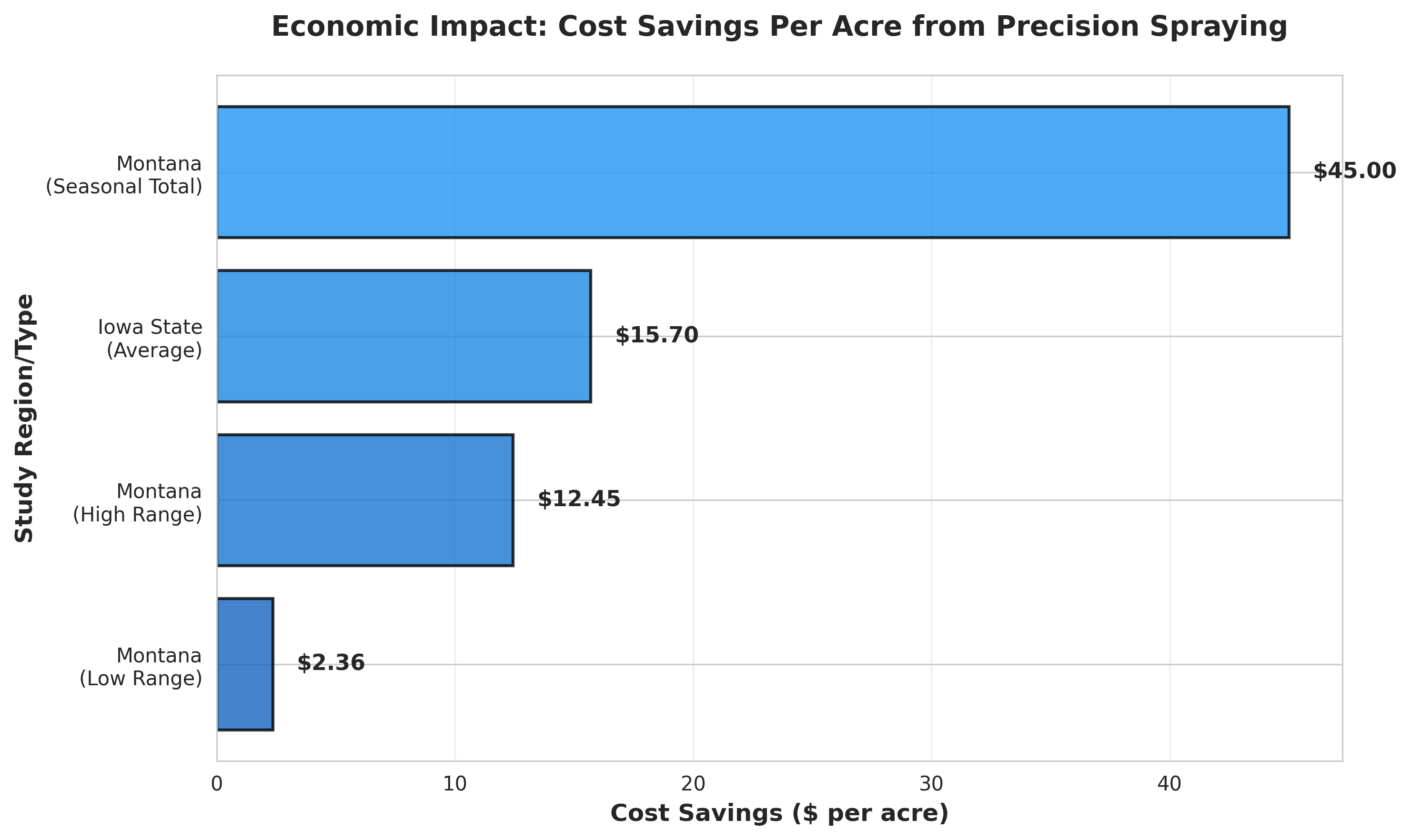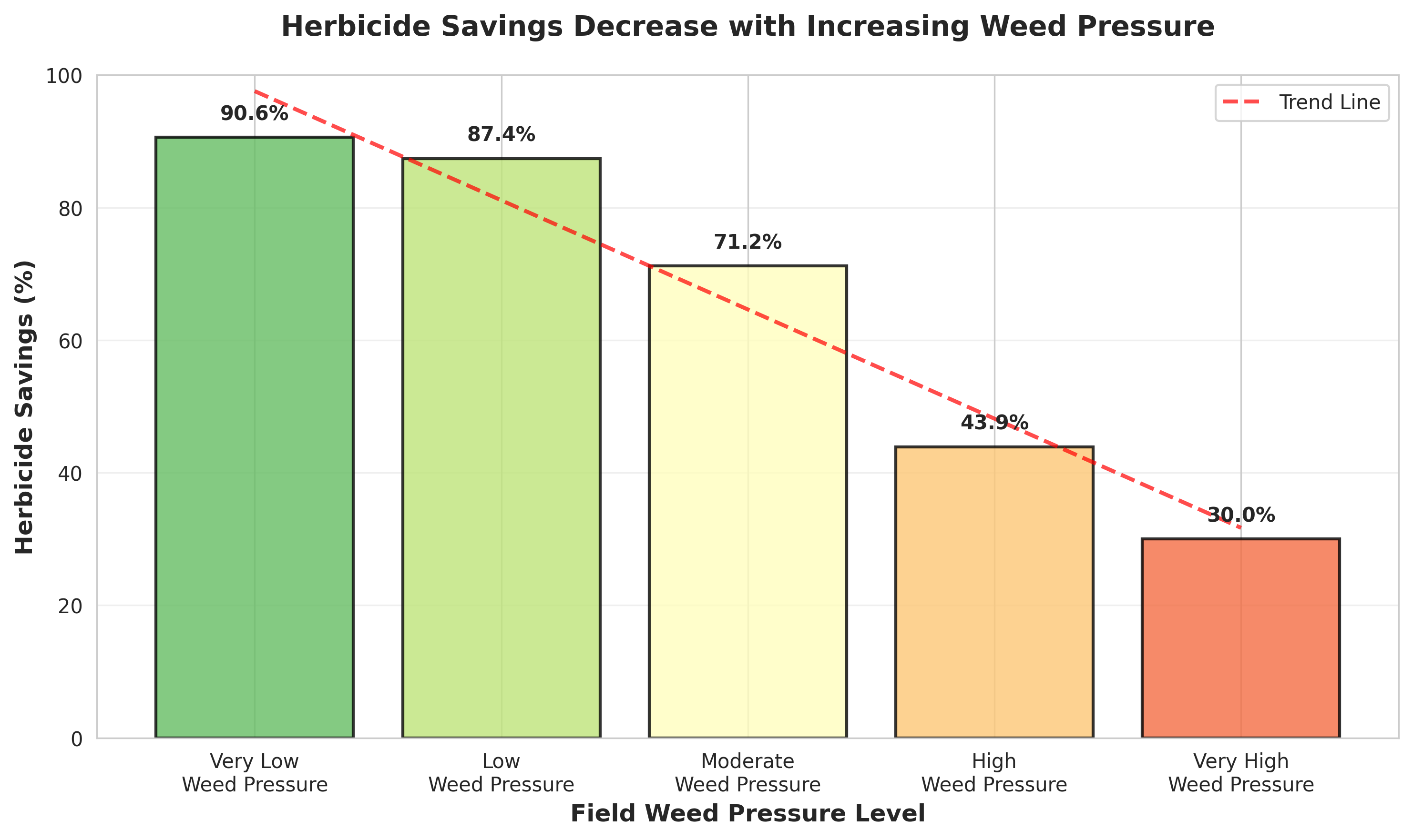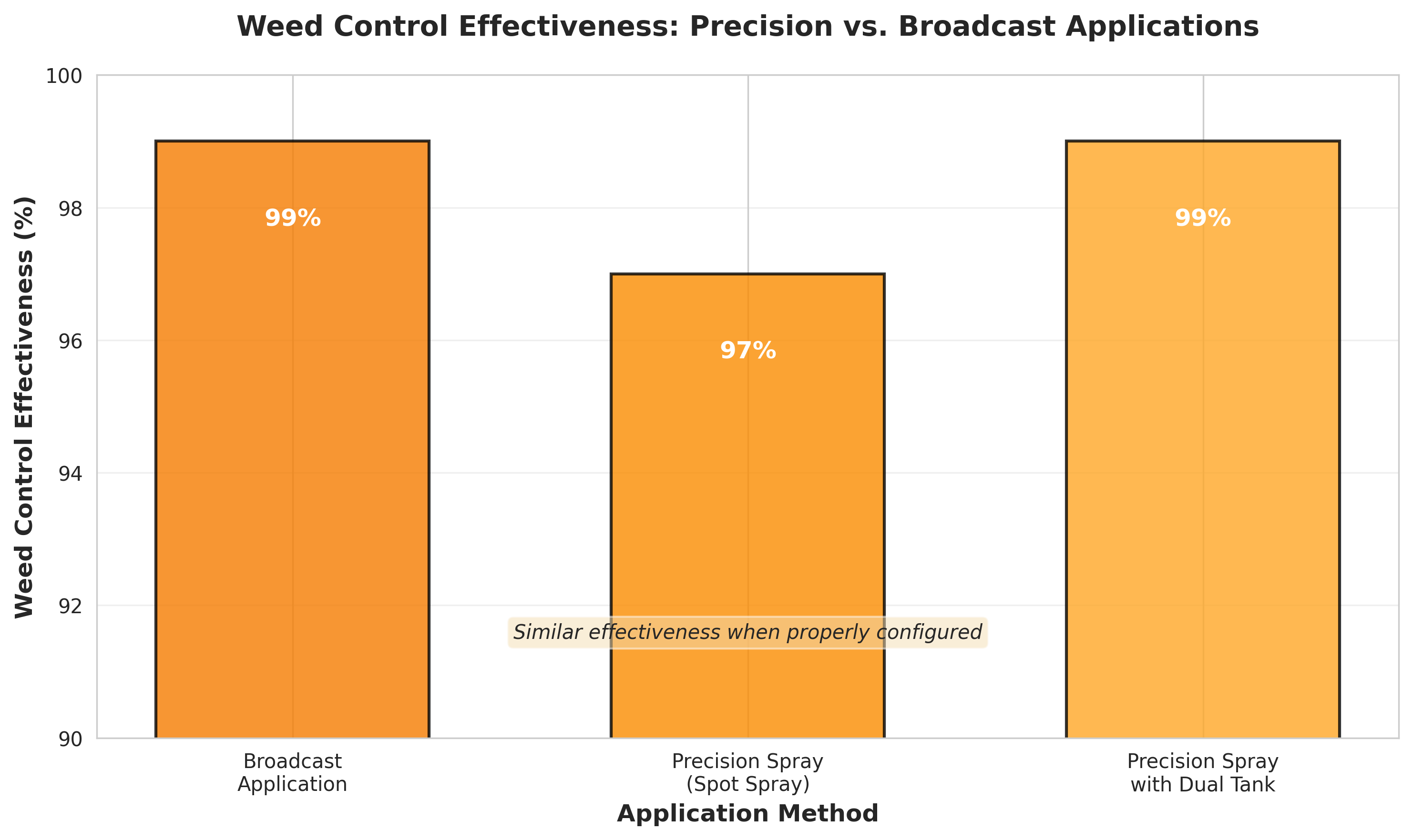
Precision spray technology continues to gain traction globally, offering farmers the promise of reduced herbicide use through camera-guided application systems. However, recent field trials reveal these systems reduce herbicide use by 53% to 86%, while research shows they're not a silver bullet for herbicide-resistant weed management.
The Reality Check
Three-year field trials in Arkansas soybeans showed precision sprayers can cut post-emergence herbicide use by 43% to 59% when properly configured. But here's what farmers need to understand: these systems work best as part of a comprehensive program, not as standalone solutions.

Montana trials documented herbicide savings of $2.36 to $12.45 per acre while maintaining effective control. The catch? Herbicide savings are directly influenced by initial weed pressure—fields with lower weed populations see greater reductions.

Understanding Weed Pressure Impact
One of the most critical factors affecting precision spray performance is the initial weed pressure in your fields. Research from Iowa State University clearly demonstrates this relationship.

Key Insight: Precision sprayers deliver maximum value in well-managed fields with established weed control programs, not as rescue tools for heavily infested areas.
Broadcast Residuals Remain Essential
One critical finding: single-tank systems applying both residual and post-emergence herbicides through targeted spraying risk accelerated herbicide resistance. The solution lies in dual-tank systems that simultaneously broadcast residual herbicides while spot-spraying post-emergence products.

Research across multiple crops shows factors including weed species present, growth stage, and the presence of resistant weeds significantly affect herbicide volume reduction. This variability means farmers must understand their specific field conditions before investing.
The Growing Resistance Crisis
The urgency of effective resistance management cannot be overstated. Global data paints a sobering picture of the herbicide resistance challenge facing modern agriculture.

Multiple Modes of Action Aren't Optional
Even with precision spraying, using multiple effective herbicide modes of action remains necessary for known resistant biotypes and weeds with high resistance potential. Tank mixing different herbicide sites of action proves more effective than rotating herbicides seasonally for resistance management.

The Herbicide Resistance Action Committee emphasizes that increasing diversity in weed management practices—both chemical and non-chemical—remains crucial for slowing resistance development.
Practical Considerations
Equipment matters. Individual nozzle control, compatible nozzles based on manufacturer specifications, and boom recirculation systems are required for consistent herbicide coverage during precision applications.
Early-season timing proves critical. Detection accuracy improves significantly when targeting smaller weeds, and some systems report a 7% improvement in weed control over broadcast spraying by hitting weeds more intensely at multiple angles.
Key Implementation Factors:
Nozzle Selection & Spacing: Choose nozzles compatible with your precision system and herbicide requirements. Proper spacing ensures adequate coverage without gaps.
Boom Height Management: Maintain consistent boom height across varying terrain. Modern systems include automatic height control, but manual monitoring remains essential.
Detection Sensitivity Settings: Higher sensitivity settings detect more weeds but may increase false positives. Balance based on your field conditions and resistance risk.
Tank Mix Compatibility: Ensure your herbicide combinations are chemically compatible and won't cause antagonism that reduces effectiveness.
The Bottom Line
Precision sprayers deliver on herbicide reduction promises, but only when integrated properly. Weed control remains similar to broadcast applications when using targeted precision sprayers correctly, but farmers need realistic expectations: these tools complement rather than replace comprehensive integrated weed management programs.
With no new herbicide modes of action expected soon, and agricultural intensification driving increased herbicide resistance worldwide, precision spraying represents one tool among many farmers need to preserve herbicide effectiveness for future generations.
Action Steps for Farmers:
Assess Your Starting Point: Evaluate current weed pressure levels in your fields before investing in precision spray technology.
Prioritize Dual-Tank Systems: If purchasing new equipment, invest in dual-tank configurations that allow simultaneous broadcast and targeted applications.
Maintain Multiple Modes of Action: Continue using effective tank mixes with different herbicide sites of action, even with precision equipment.
Start with Low-Pressure Fields: Implement precision spraying first in fields with lower weed populations to maximize economic returns and gain operational experience.
Monitor and Adapt: Track herbicide savings, weed control effectiveness, and resistance development. Adjust strategies based on results.
Integrate Non-Chemical Controls: Combine precision spraying with crop rotation, cover crops, and mechanical control for comprehensive resistance management.
References
Montana State University, Northern Agricultural Research Center. (2025). "Precision Ag Update." https://agresearch.montana.edu/narc/Programs_and_projects/narc-precisionag/
University of Arkansas System Division of Agriculture. (2025). "Precision Agriculture Research Measures Effectiveness of See & Spray Technology." https://aaes.uada.edu/news/see-and-spray-research/
Iowa State University Extension. (2024). "Precision Spraying Technology." https://crops.extension.iastate.edu/cropnews/2024/08/precision-spraying-technology
Herbicide Resistance Action Committee. "Overview of Herbicide Resistance." https://hracglobal.com/herbicide-resistance/overview
GROW Integrated Weed Management. (2025). "Take Action's 2025 Herbicide Classification Chart." https://growiwm.org/
University of Minnesota Extension. "Herbicide-Resistant Weeds Management." https://extension.umn.edu/herbicide-resistance-management/herbicide-resistant-weeds